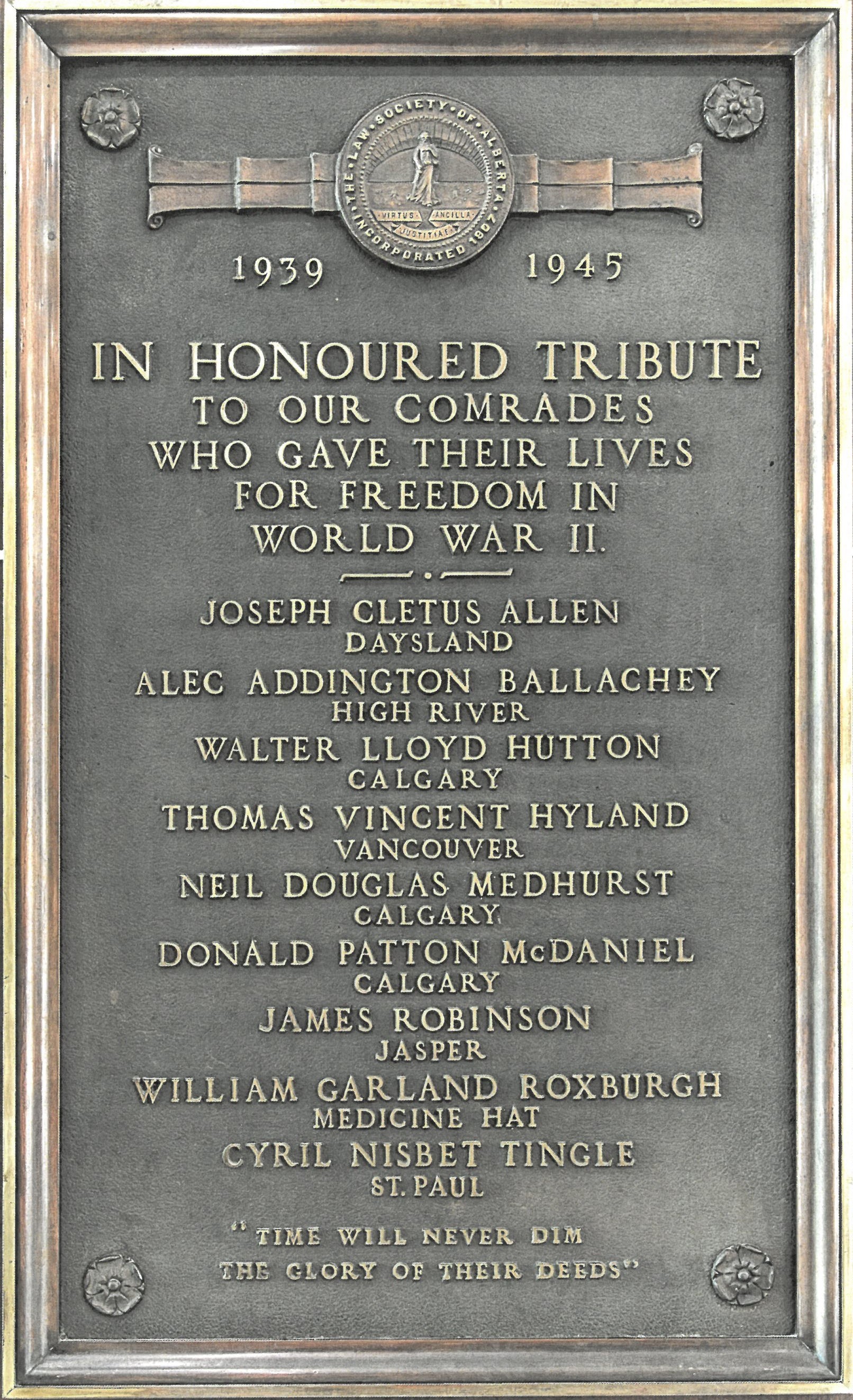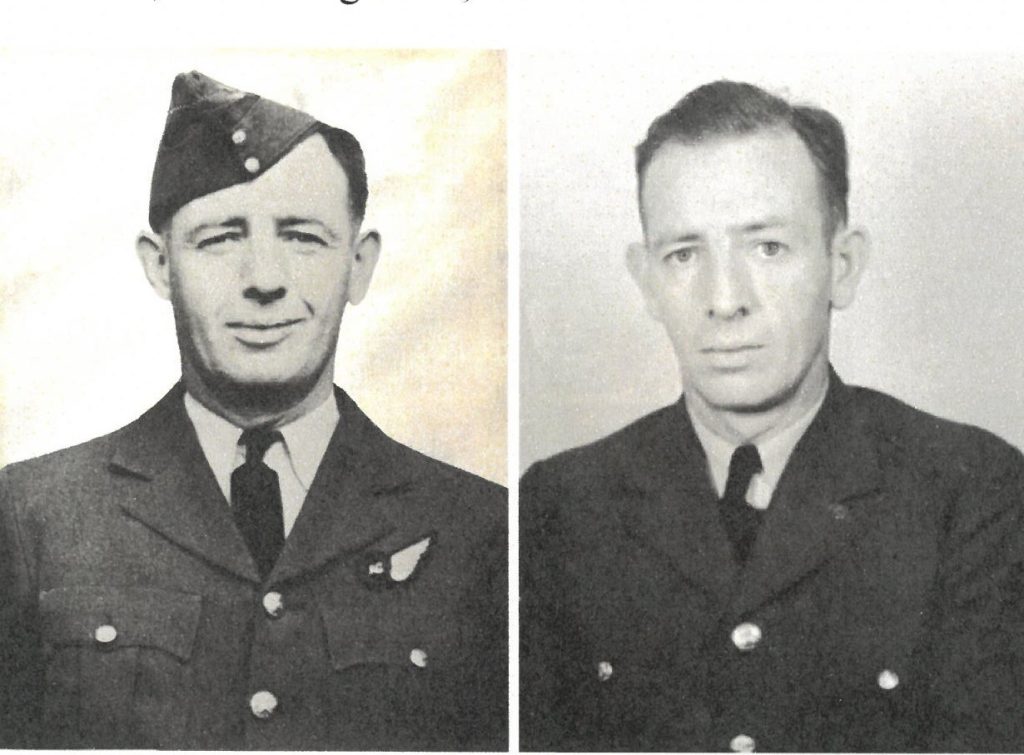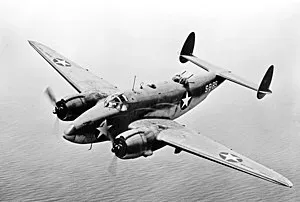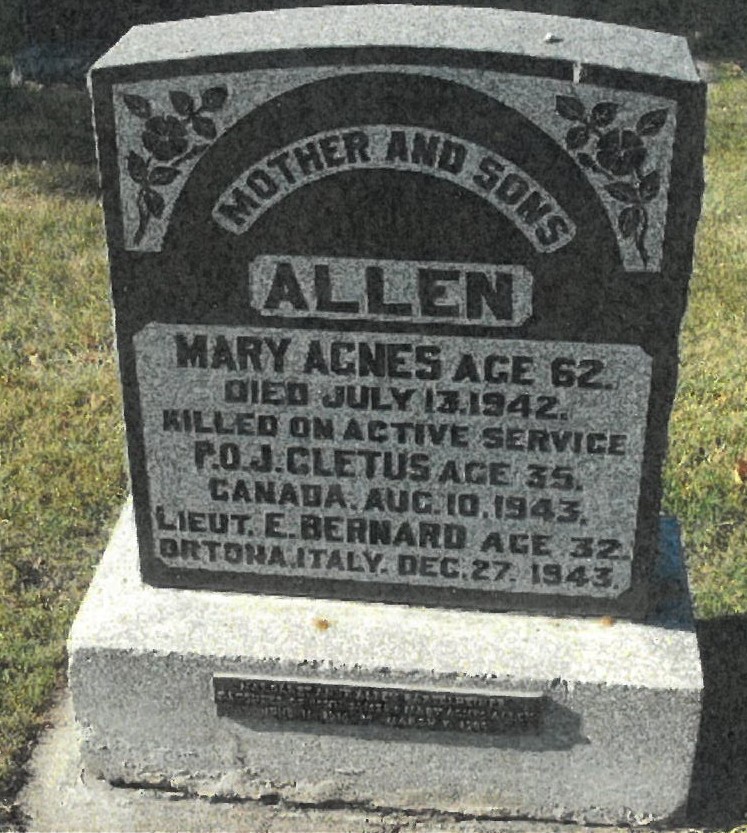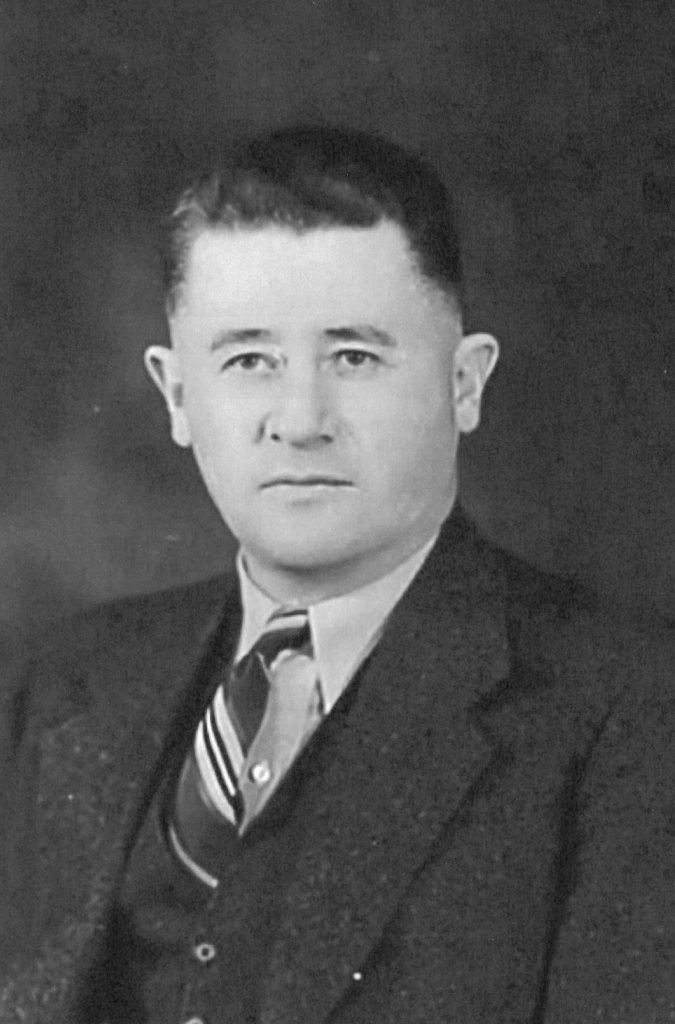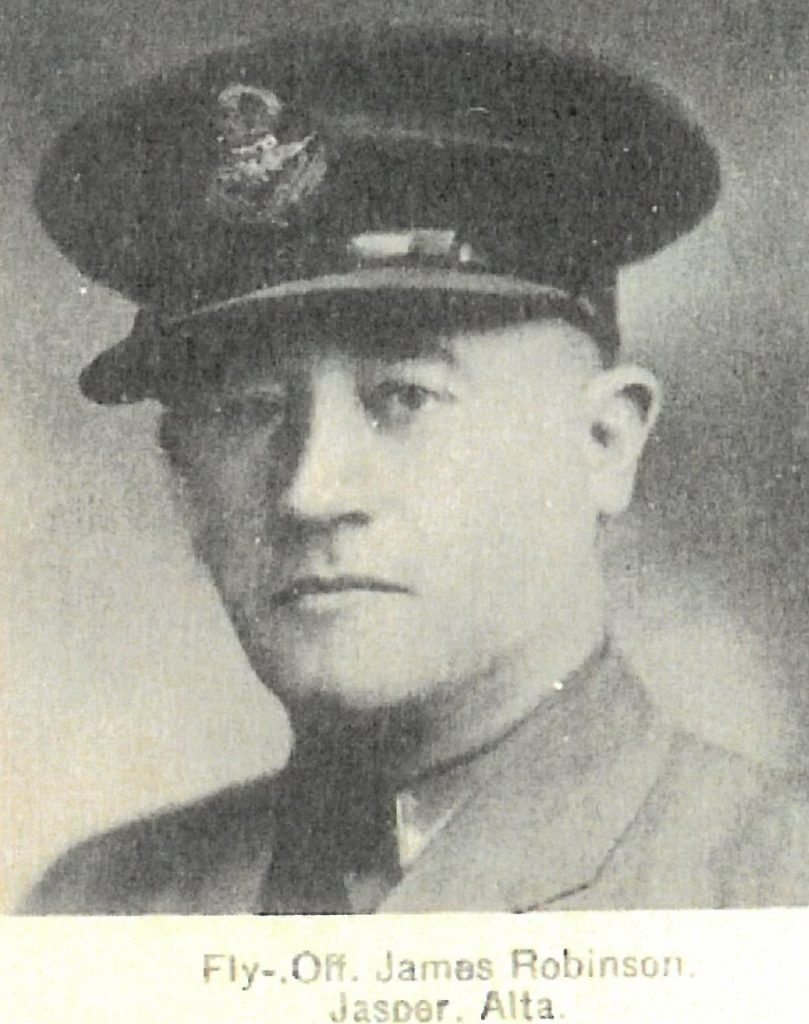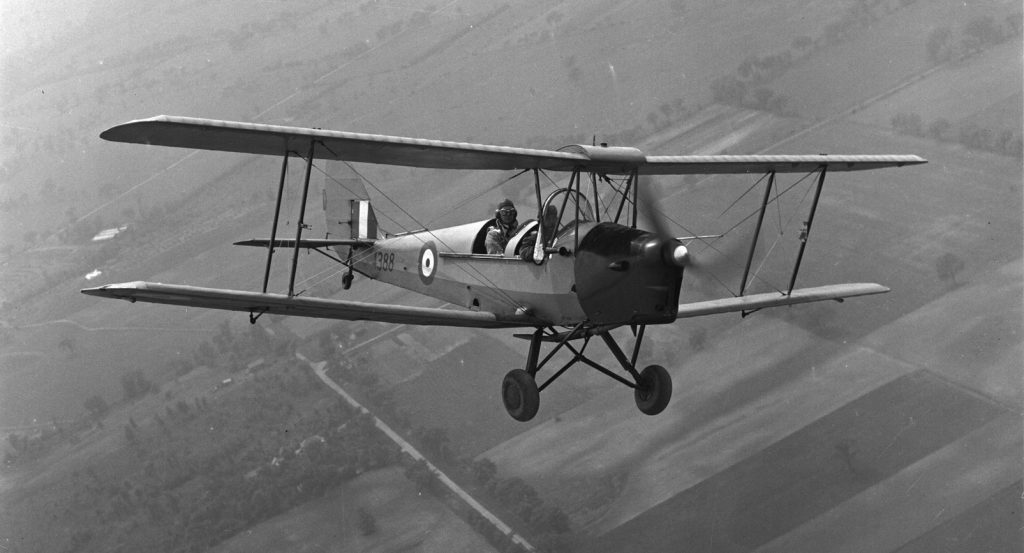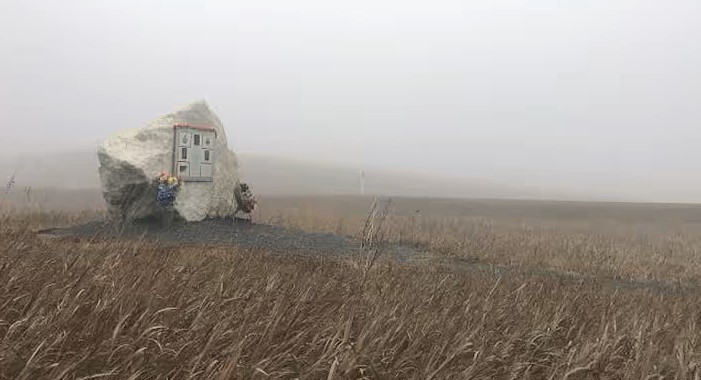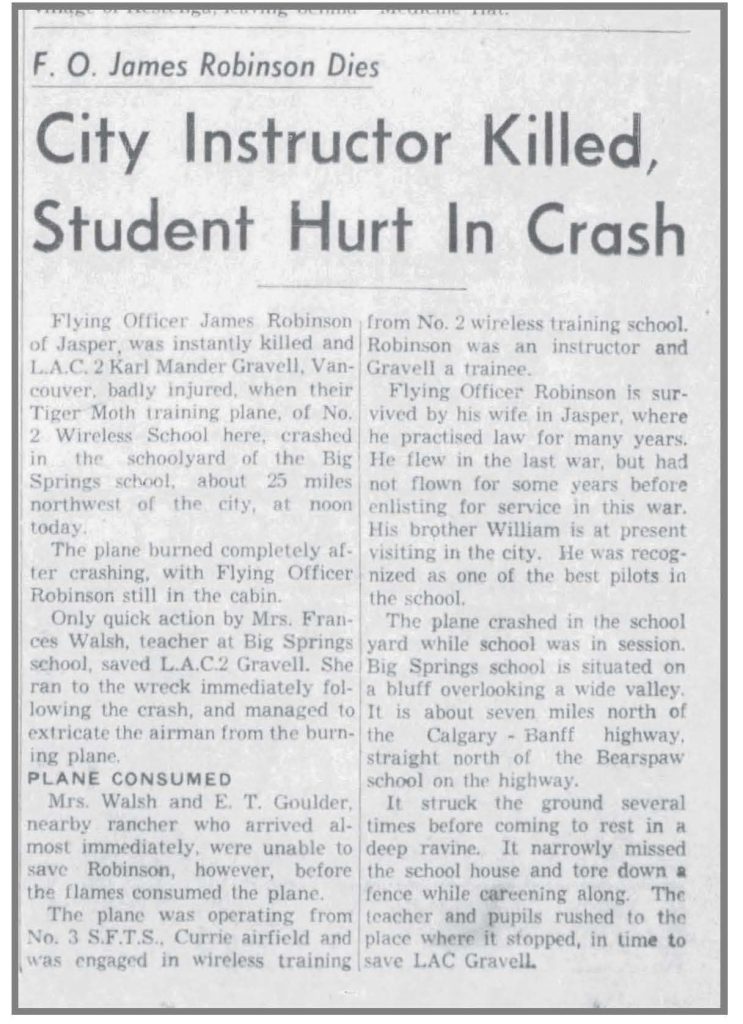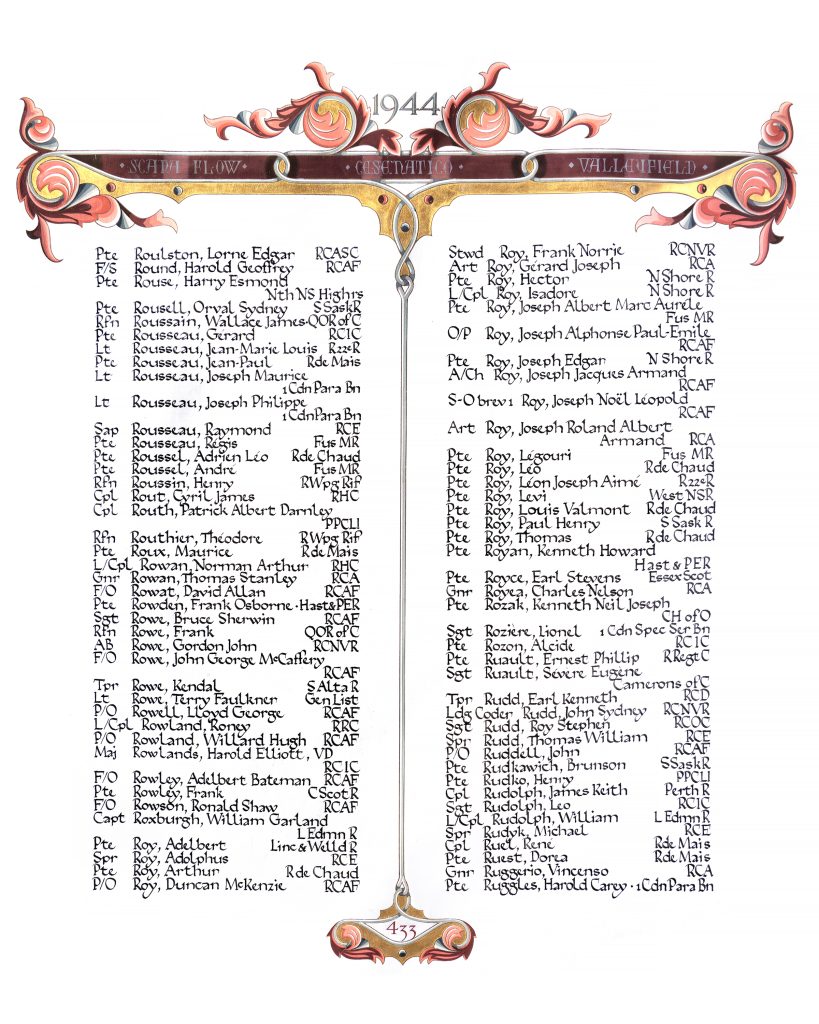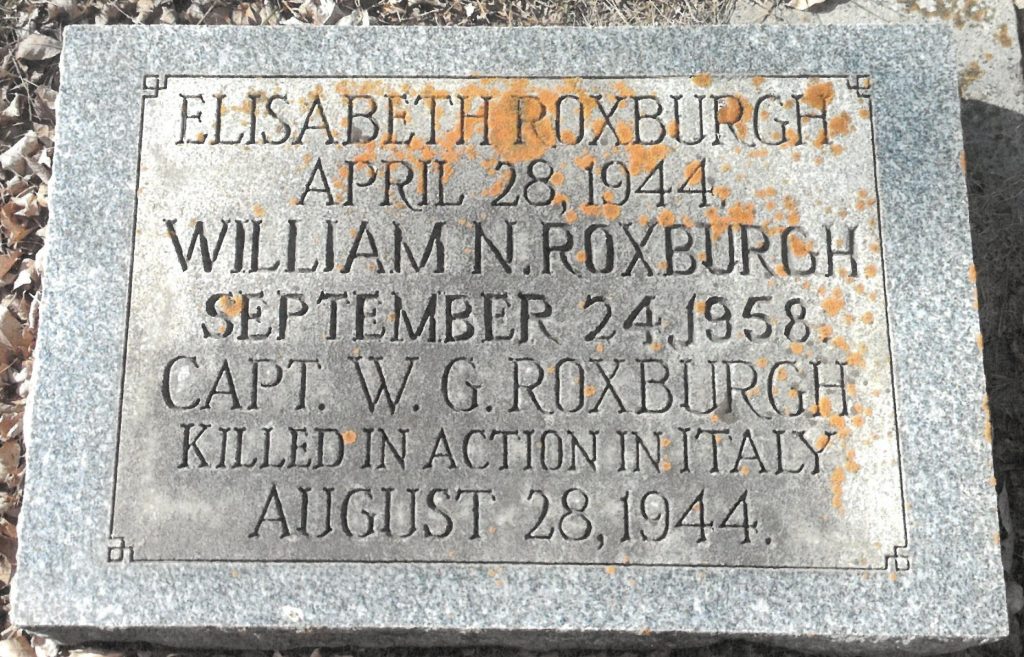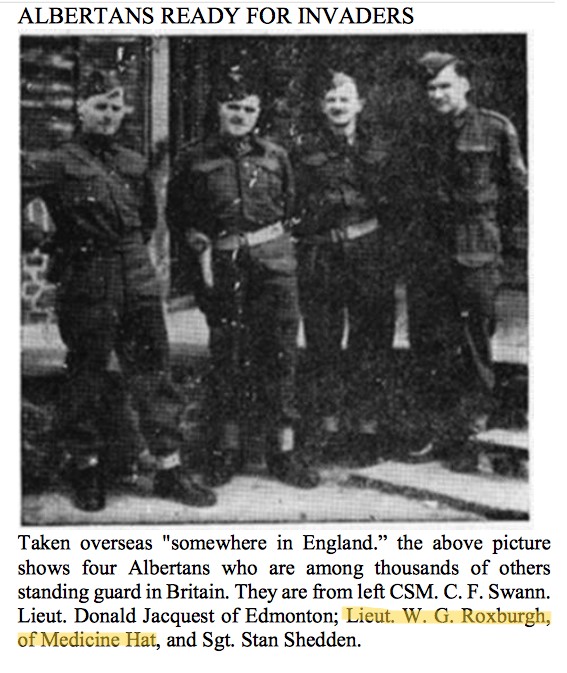Stacy F. Kaufeld, M.A.
Joseph Cletus Allen
Born March 16, 1908, in Douro, Ontario, to John Joseph Allen and Mary Agnes Allen. He graduated from the University of Alberta law school in 1937 and was admitted to the Alberta bar in August 1939, just prior to the outbreak of World War II. Before becoming a lawyer, Joseph was a teacher, having received his teaching certificate in 1924-25, and worked for Imperial Oil Ltd. in Edmonton and Waterways. He articled with C.H. Grant starting in 1937 and began his own law practice in August 1939, where he remained for four years.
Joseph married Ruby Maude McCaskill on July 16, 1938, in Fort McMurray, Alberta. Ruby received her diploma in nursing in May 1933 from the University Hospital in Edmonton. They had two son: Derek Duncan and David Bruce. Jospeh was sports enthusiast interested in tennis, skating, hockey, and softball. He also liked music, in particular the banjo and piano. He spent much of his downtime reading.
Joseph enlisted in the RCAF in Edmonton on August 8, 1941. Following a medical examination that uncovered a slight deviation of the nasal septum and a requirement for glasses for astigmatism, it was recommended that he become a navigator or pilot, not a gunner. However, after training, where he was considered an above average student with no particular difficulties, Joseph earned his gunner’s badge on June 25, 1943.
He went to Pennfield Ridge, New Brunswick, for No. 34 Operational Training Unit from July 12, 1943, to September 1943, but Joseph never completed training. On August 10, 1943, Joseph and his crew boarded a Ventura GRV FN973 for a three-hour low level (250 feet) cross country flight. The plane never returned and on August 11, 1943, pieces of the aircraft were found in the Bay of Fundy. The aircraft was missing and three crew, including Joseph, were presumed dead.
Joseph has no known grave, but his name appears on the Ottawa Memorial, as well as the Law Society of Alberta’s memorial plaque in the courthouse in Edmonton and Calgary.
Alec Addington Ballachey, Jr.
Born in High River, Alberta, on June 26, 1911, Alec was a distant relative of the Scottish-born inventor, Alexander Graham Bell. He graduated from the University of Alberta with an LL.B on May 15, 1935, and was admitted to the Alberta bar on June 15, 1936. He practiced at his father’s firm, Ballachey, Burnet, Heseltine and McNeill, in High River until he enlisted in 1940 with the Calgary Highlanders at the rank of Lieutenant.
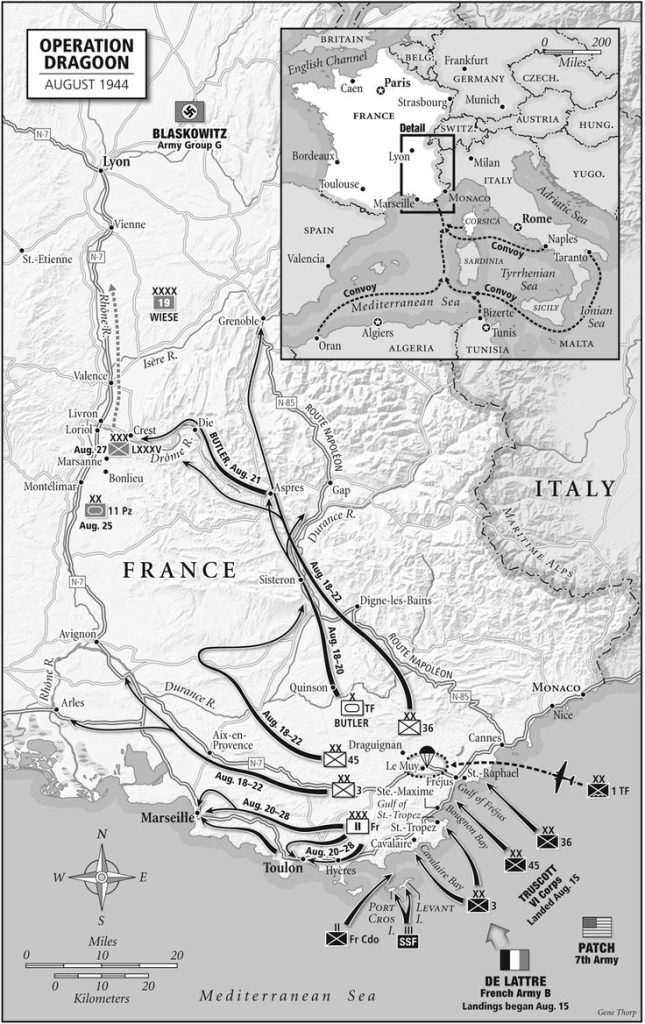
Originally, had not planned to go to France, he relieved another lawyer who wanted to go to England. As such, Alec was part of the operations that followed the D-Day landings on June 6, 1940. Operation Dragoon and Operation Tractable were significant battles that occurred during the Normandy campaign where Canadian forces encircled 150,000 German soldiers at Falaise, France. Rising to the rank of Major, Alec was serving with the 14th Canadian Hussars, RCAC, 8th Reconnaissance Regiment when he died on August 15, 1944, near Estresse-La Campagne. He was reburied on May 14, 1945, at the Canadian Cemetery in Bretteville-Sur-Laize.
James Robinson
Born on June 20, 1898, in Ireland, County Down, James was an experienced aviator. During the World War I, he served as cadet, pilot, and instructor with the RAF. On November 10, 1940, he enlisted with the RCAF in Edmonton.
He graduated from a high school in Edmonton before earning an LL.B. in 1917 from the University of Alberta. He was admitted to the Alberta bar on March 29, 1920. James practiced law in Edmonton before moving to Jasper where he was a lawyer from fifteen years prior to his enlistment. He married Mildred J. Moore on September 12, 1935, and had two children: James and Karen.
During a training exercise northwest of Calgary in Simons Valley on November 12, 1941, James’s plane suffered catastrophic failure and plunged into the prairie fields with an explosion that rattled a nearby one-room school house. James Robinson died instantly from the crash. He was forty-four years old. An investigation concluded that the Menasco Moth was underpowered, overweight, and not suitable for training.
Though this crash did not happen overseas in combat, it is a stark reminder that many deaths occurred on the home front. It is estimated that 1400 air crew died during training.
William Garland Roxburgh
Born in Portage la Prairie, Manitoba, on May 27, 1907, William graduated from the University of Alberta with an LL.B in 1936. He was admitted to the Alberta bar on April 12, 1938. He practiced law in Medicine Hat, Alberta with Roxburgh & Mulligan. From 1926 until 1928, he was a teacher in Medicine Hat. He was married to Olga Ruth Roxburgh and they had no children.
William enlisted in the army with the Loyal Edmonton Regiment, RCIC on January 27, 1940, at the rank of Lieutenant. The details of his military service in Europe and his death are sparse. According to military records, he was injured twice in non-combat incident. He was promoted to Captain in August 1943. William was killed in action on August 28, 1944, in the Mediterranean theatre at the age of thirty-seven. He is buried in Montecchio Cemetery in Italy. There is also a family memorial at Hillside Cemetery in Medicine Hat.
James Constabaris
Born in Edmonton on January 4, 1915, he graduated from the University of Alberta in 1938 with an LL.B and was at the top of his class. He never became a lawyer. In a 1938 letter, before the outbreak of war in Europe, Constabaris wrote to Western Air Command that he wanted to make the air force his career. He continued that he had never been “particularly interested in law” and given his good standing he had no doubt in his ability to do something well that he was interested in.
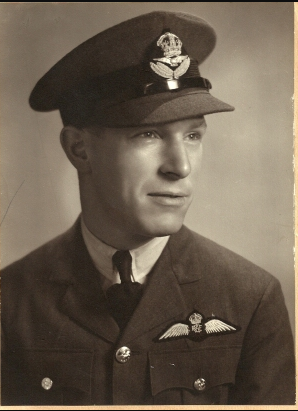
He joined the RCAF in the late 1930s and was initially stationed in Moose Jaw, Saskatchewan as a flight instructor. On July 2, 1941, Constabaris was involved in a tragic air accident where a student pilot, L.A.C. Darling was killed.
Promoted to First Lieutenant in early 1942, he was transferred to the Royal Air Force Ferry Commend based in Laval, Quebec. From here he was assigned to flight American built aircraft to the United Kingdom. His parents received a telegram on May 27, 1942, informing them that their son went missing on May 23. On June 4, they received a second telegram informing them of their son’s death. His body washed ashore at Drumbannon Point, County Donegal in Northern Ireland on May 29, 1942. There were no conclusions for the cause of the crash. Constabaris’s body was transferred to the British on May 30. He was buried with full military honours a cemetery in Irvinestown, County Fermanagh, Northern Ireland.
